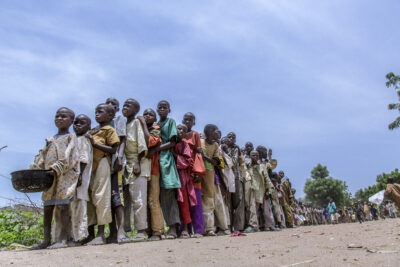Although sometimes mistaken as synonymous with “pure democracy,” direct democracy has also been called “a device of dictators and demagogues.” This apparent incongruence highlights the many virtues and vices of direct democratic rule. Some of the virtues of direct democracy are its powerful reinforcement of the concept of “government of the people, by the people, for the people” and its ability to check representatives who are not responsive to the preferences of their constituencies. Some of its vices include the promotion of majoritarian rule over pluralistic rule, sometimes severely disadvantaging minority groups; its capacity to be easily manipulated by the complex drafting of propositions, uneven media coverage, or timing of the vote; and its method of bypassing other key democratic institutions, such as the legislature. For these reasons, I would argue that the use of direct democracy should be limited in scope and subject to institutional safeguards.
While there are many different forms of direct democracy—including plebiscites, town meetings, recall elections, and initiatives—this essay focuses on one particular mechanism of direct democracy that has been on the rise since the 1970s:1Stephen Tierney, “Constitutional Referendums: A Theoretical Enquiry,” Modern Law Review 72, no. 3 (2009): 360–383. the referendum. Most commonly, referenda serve to ratify new constitutions (e.g., Iraq and Kenya), decide issues of self-determination (e.g., Scotland), finalize processes of European integration (or disintegration, in the case of Brexit), settle questions of rights (e.g., Ireland), or solidify executive authority (e.g., Turkey).
It is important to make clear distinctions between the use, misuse, and abuse of referenda in these differing contexts. According to Leah Trueblood, issues of self-determination represent an appropriate use of referenda, because “referenda are a better expression of political will than violence.” On the other hand, she points out that a popular vote to adjudicate rights may be less appropriate, stating that “the idea that any group has to appeal to another for a right… could be a misuse of referenda.” Finally, she highlights the dangerous propensity for authoritarian leaders to abuse referenda in order to extend the scope of their powers or their time in office.2Leah Trueblood, “The Uses and Abuses of Referendums” (PhD diss., University of Oxford, 2018). Recent events in Rwanda and Burundi exemplify how referenda can be abused to expand a leader’s authority.
Case studies: Rwanda and Burundi
“Both constitutions included clauses intended to safeguard democratic governance, and both constitutional referenda marked an important step toward the consolidation of democracy.”Following Burundi’s bloody civil war (October 1993–August 2005) and Rwanda’s genocide (April 1994–July 1994), both nations sought to develop new constitutions. On February 28, 2005, a national referendum was held in Burundi that would lead to the adoption of a power-sharing constitution. This constitution mandated the direct election of presidents who could serve a finite number of terms in office; representation quotas for ethnic groups and women in the Chamber of Representatives; and a two-thirds majority for any law to be passed. Similarly, a May 2003 referendum held in Rwanda approved a new constitution that established an independent judiciary, prohibited the formation of ethnic or religious parties, and limited presidents to two seven-year terms. Both constitutions included clauses intended to safeguard democratic governance, and both constitutional referenda marked an important step toward the consolidation of democracy. Additionally, the constitutions were approved by over 92 percent of voters with approximately 90 percent voter turnout in both Burundi and Rwanda. Because these referenda were fully legitimate in process and outcome, they demonstrate an appropriate use of the referendum.
However, these constitutions have not proven to be resilient. In the past four years, Rwanda and Burundi have voted to extend presidential term limits, also through nationwide constitutional referenda. The results allow the current presidents to stay in power until 2034,3Though the amendment to Burundi’s constitution would allow the president to serve again until 2034, President Pierre Nkurunziza has stated he will step down in 2020. exhibiting a clear shift toward authoritarianism. Because the systematic elimination of checks on executive power was accomplished legally, through constitutional referendum, it is extremely difficult to counteract.
Paul Kagame has served as the president of Rwanda since 2000. Although the Kagame government has been praised for improving the economic and social conditions of its people, it has also curtailed civil liberties, including political freedoms. According to Freedom House, opponents of the Rwandan Patriotic Front (the president’s party) have been routinely subjected to “intimidation…arbitrary arrests, beatings, politicized prosecutions, enforced disappearances… and suspected assassinations” throughout Kagame’s tenure. Under these circumstances, the regime held a referendum in 2015 to alter the constitution in order to allow Kagame to serve three additional seven-year terms in office after the two already permitted under the constitution. The electoral commission reported that 98.3 percent of voters voted in favor of this change. However, the referendum was tainted by political intimidation, and the only significant opposition party, the Democratic Green Party, was not permitted to campaign against the constitutional changes in advance of the vote.4There have been additional allegations asserting the Democratic Green Party is just a front to make it appear there is legitimate opposition, especially after it joined the RPF-aligned National Consultative Political Parties Forum in 2014. See also Jean Leonard Seburanga and Theodette Gatesire, “The 2003 and 2015 Constitutional Referenda in Rwanda: A Significant Change in Voter Turnout,” Democracy and Security 12, no. 3 (2016): 167–168.
Burundi, unlike its neighbor, experienced more vocal opposition to the extension of presidential term limits. President Pierre Nkurunziza of Burundi has been in office since 2005, but in 2015, he sought a third term, arguing that he was elected for his first term by parliament and not through a general election. In response, the country erupted in mass protests and violence, resulting in 1,200 deaths and 400,000 displacements. Violence continued to escalate ahead of a 2018 referendum that introduced a constitutional amendment intended to further extend Nkurunziza’s presidency through two more seven-year terms. Following the announcement of the referendum, Human Rights Watch reported increased “repression and human rights violations” in the form of “killings, rapes, beatings, arbitrary detention, threats, and harassment” of the opposition. Hundreds of thousands of Burundian refugees fled the country. Although Nkurunziza faced much stronger opposition in Burundi than his counterpart faced in Rwanda, the strategy of abusing referenda to consolidate and extend power still achieved the desired effect. On the day of the election, results indicated that around 80 percent of Burundi citizens approved the constitutional change. Efforts by the opposition to invalidate the referendum results by petitioning Burundi’s constitutional court and the US State Department’s condemnation of the referendum process proved fruitless, and the constitutional changes took effect.
Consequences for democracy
Both Kagame and Nkurunziza claim to be legitimate democratic leaders, because, they argue, their power stems from free and fair elections. In both cases, referendum results indicate that an overwhelming majority of the population was in favor of extending term limits, and there is nothing inherently undemocratic about updating constitutional law. Yet, by obscuring their authoritarian tendencies with referenda that were conducted through manipulating the electoral process and stifling opposition voices, Kagame and Nkurunziza quickly and successfully extended their power. In the case of Rwanda in particular, Jean Leonard Seburanga and Theodette Gatesire go so far as to attribute Rwandans’ lack of opposition to the referendum to the state of fear and oppression they live in. They assert the elections don’t represent popular will but are mere instruments to ensure a leader’s power.5Seburanga and Gatesire, “The 2003 and 2015 Constitutional Referenda in Rwanda,” 174–175.
It is important to note that Rwanda and Burundi are not isolated cases, but instead illustrate a wider trend. In the past 43 years, a total of 221 presidents of third-wave democracies have reached the end of their final term in office. Of these, 69 presidents have attempted to bypass term limits,6Kristin McKie, “Presidential Term Limit Contravention: Abolish, Extend, Fail, or Respect?,” Comparative Political Studies 52, no. 10 (2019): 1500–1534. with 23 succeeding at lifting term limits and 31 achieving at least one additional presidential term. In Africa alone, ten countries have modified or eliminated term limits since 2002.
Preserving the integrity of referenda
“Because referendum results can be manipulated through violence or disenfranchisement by rising autocrats to legalize authoritarian rule, countries would be wise to include in their institutional design safeguards and limits to the use of referenda”Citizens of democratic societies should be aware of how mechanisms of direct democracy can be abused in ways that threaten the future of democracy. Because referendum results can be manipulated through violence or disenfranchisement by rising autocrats to legalize authoritarian rule, countries would be wise to include in their institutional design safeguards and limits to the use of referenda. For example, several major established democracies (such as Germany, the United States, and India) now limit popular votes on substantive issues to just the local and regional levels. In Colombia, any national referendum is subject to approval by the constitutional court and a qualified majority in congress before it can be put up for a vote. As recommended by the Office of the United Nations High Commissioner for Human Rights, Colombia also requires a quorum to be met (a minimum percentage of the electorate must approve the measure) in order for a referendum to be valid. By preventing constitutional amendments from being instantly passed through national referendum, these countries protect their constitutionally established democratic institutions from being easily undermined.
Banner photo credit: Mugisha Don de Dieu/Flickr














